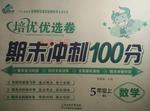
For more than a century, since he captured the spoken words "Mary had a little lamb" on a sheet of tinfoil (锡纸), Thomas Edison has been considered the father of recorded sound. But researchers say they have discovered a recording of the human voice which is nearly two ___小题1:___earlier than Edison's invention of the phonograph.
The 10-second recording of a singer crooning (轻声歌唱) the folk song "Au Clair de la Lune" was discovered earlier this month in an ___小题2:___ in Paris by a group of American audio historians. It was made, the researchers say, on April 9, 1860, on a phonautograph, a machine designed to record sounds ___小题3:___, not to play them back. But the phonautograph recording, or phonautogram, was made playable---converted from squiggles (潦草的字迹) on paper to sound---by scientists at the Lawrence Berkeley National Laboratory in Berkeley, Calif.
"This is a ___小题4:___find, the earliest known recording of sound," said Samuel Brylawski, the former head of the recorded-sound division of the Library of Congress, who is not ___小题5:___with the research group but who was familiar with its findings. The audio discovery could give new ___小题6:___ to the phonautograph, and its inventor, Edouard-Leon Scott de Martinville, a Parisian typesetter who went to his grave ___小题7:___that credit for his breakthroughs had been ___小题8:___bestowed on Edison.
The recordings made by Scott were not intended for listening; the idea of audio ___小题9:__ had not been conceived. Rather, Scott sought to create a paper record of human speech that could later be___小题10:___.



 金牌教辅培优优选卷期末冲刺100分系列答案
金牌教辅培优优选卷期末冲刺100分系列答案